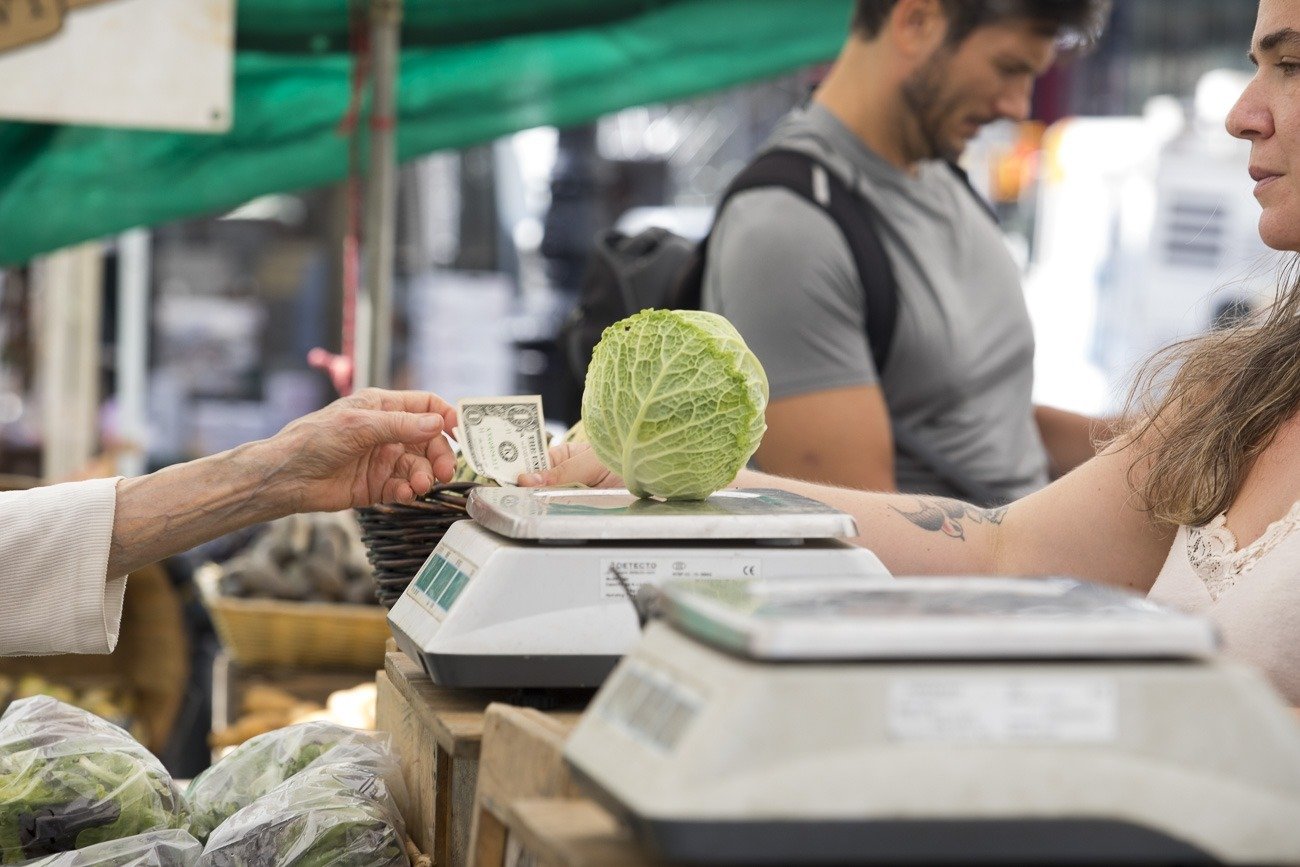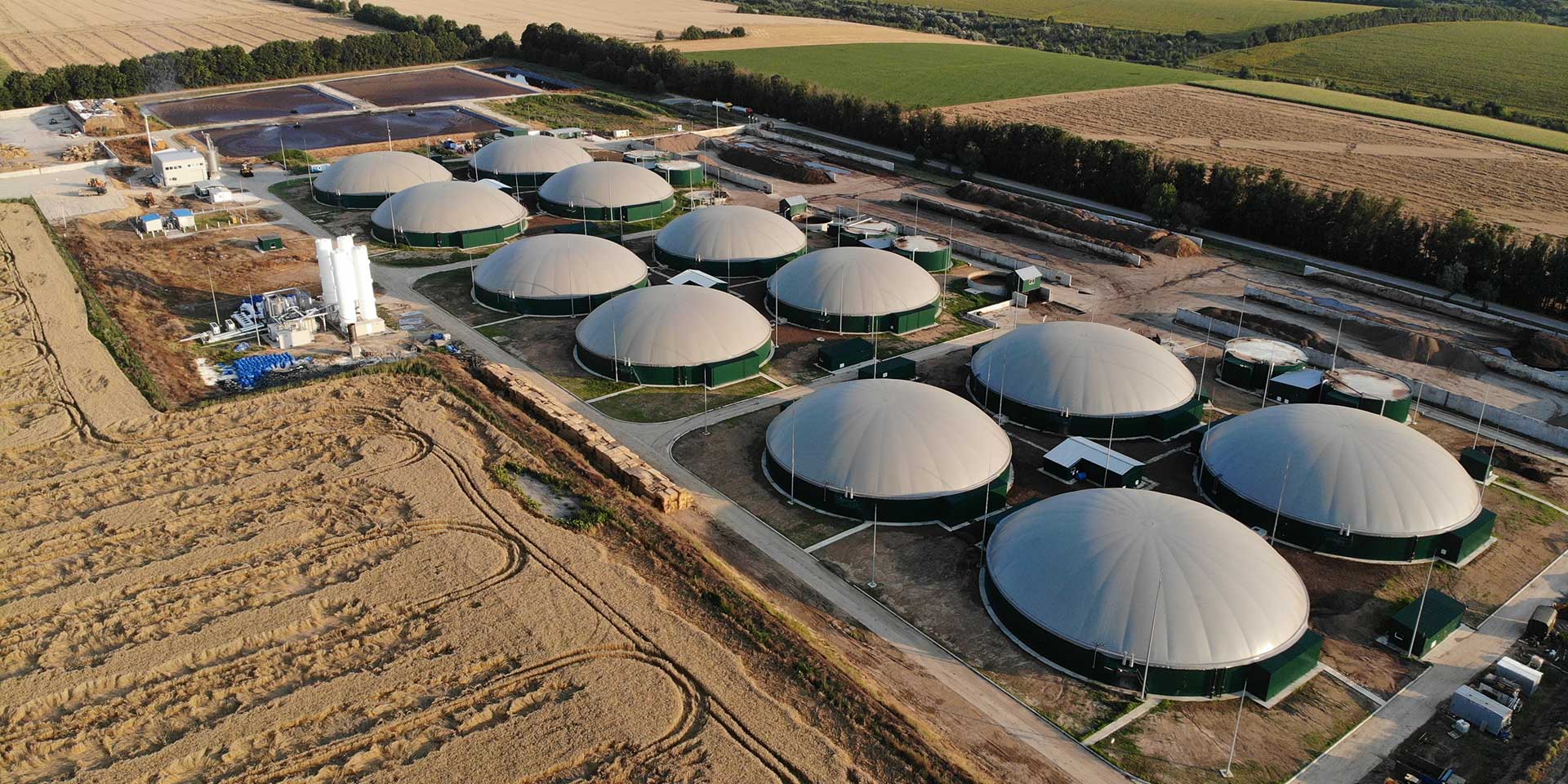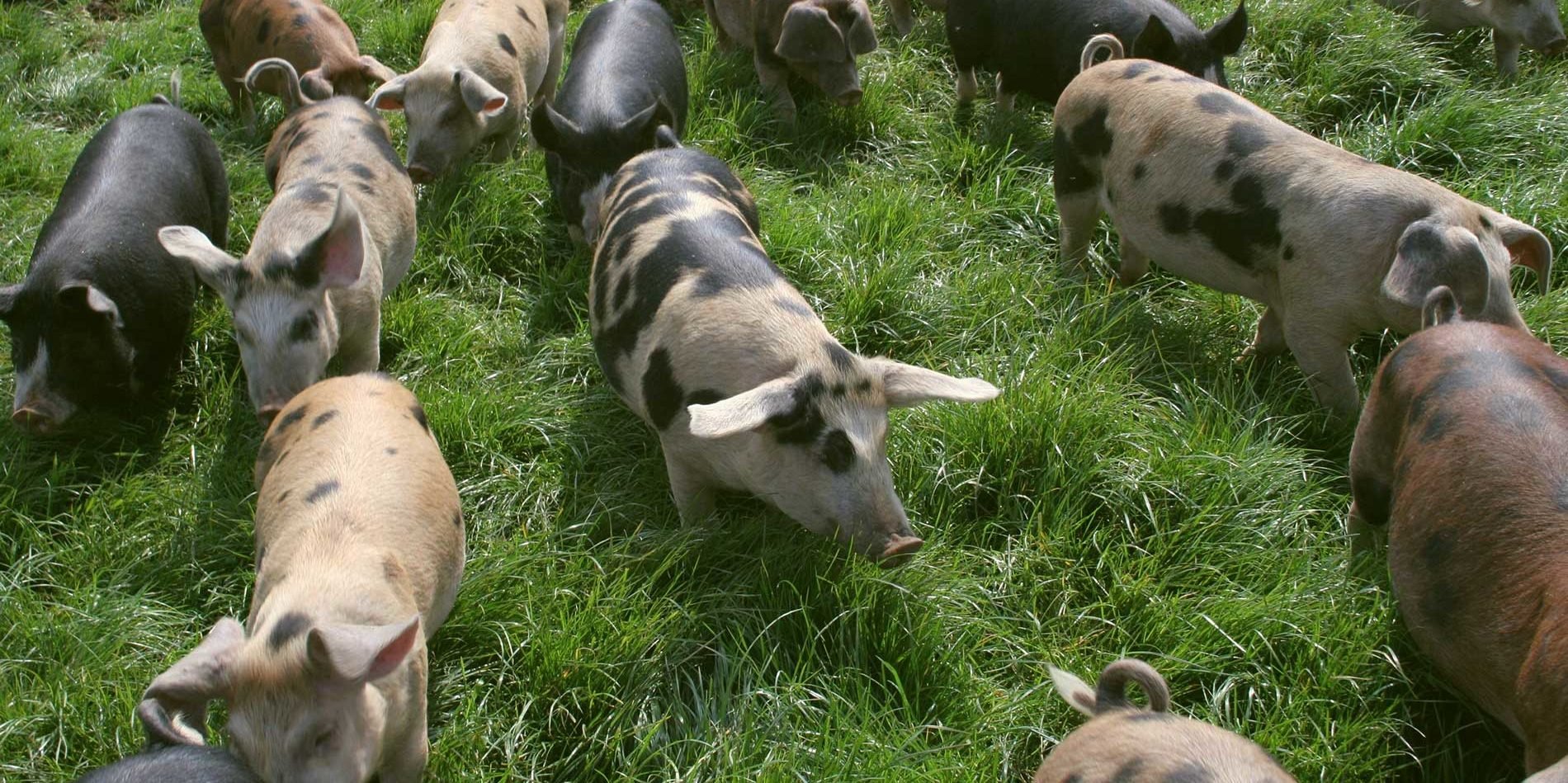The slow death of the family farm
When you say the words “family farm,” most people imagine a similar scene: a farmhouse, surrounded by a few fields, a barn and maybe some pasture with a few cows. There’s a reason we all conjure the same image: These small, diversified farms were once the backbone of U.S. agriculture. But as a combination of farm policy and corporate pressures have pushed farms to get bigger and bigger, these idyllic family farms are going under quickly — from 2017 to 2024, the number of farms in the country declined by 8 percent, or 160,000 farms. Most of those that have closed in recent years are the smallest, with the country losing more 153,000 farms with sales under $50,000 between 2017 and 2022. In the same time period, the number of large farms has increased 36 percent.
In common parlance, people talk about that consolidation as “the death of the family farm,” usually assuming that the industrially scaled operations that replace them are run by corporations. While it’s true that most of the money in agriculture is quickly funneled away from rural communities towards large corporations, there’s an important detail this narrative misses: As the American Farm Bureau Federation (AFBF) and other lobbyists for Big Agriculture are quick to point out, the bigger and bigger farms that dominate U.S. agriculture are family farms, too.
That line is sometimes deployed as a shallow “gotcha” to dissuade people from talking about agriculture’s very obvious consolidation problem. But as lawyer, activist and author Sonja Trom Eayrs details in her recent book, “Dodge County, Incorporated,” the fact that factory farms are usually family businesses is central to understanding the way that industrial agriculture has run small farms out of business and hollowed out entire communities. Rather than presenting a narrative of faceless corporate takeover, Eayrs tells a story of deep community fracture, one driven by some farming families expanding their businesses by capitalizing on the flight of their neighbors.
What is a family farm, technically?
In the eyes of the U.S. Department of Agriculture (USDA), a family farm is “any farm organized as a sole proprietorship, partnership, or family corporation.” For farms to be considered family businesses, they need to be majority-owned by the primary operator — the person who makes the decisions about what happens on the farm — and their relatives. Depending on what kind of farm the family is running, the primary operator and their family members might be responsible for most of the labor; this is especially the case on row crop farms, where much of the work is mechanized. But even farms where most of the work is done by hired farmworkers, like those that grow labor-intensive produce, are considered family farms if the business is family-owned.
- Family farm
- Defined by the USDA as any farm organized as a sole proprietorship, partnership or family corporation.
By that definition, around 96 percent of farms in the U.S. are family farms. As of the 2017 Census of Agriculture (the most recent data available as of this writing; the 2022 data on farm ownership is still incomplete), only 4.1 percent of farms in the U.S. are non-family farms. They’re also sometimes called corporate farms, though this gets a little confusing, given that “corporate farms” is a phrase sometimes casually used as a catch-all for large farms, most of which are family farms. Many of the non-family farms in the country grow higher-value specialty crops, like berries, lettuce and other produce.
And while that number has crept up over the years (and may be higher today, given that the official numbers are a few years old), that means the vast majority of U.S. farms are owned and operated as family businesses.
Formal definitions of farm size also aren’t exactly what you’d expect: Rather than being based on acreage, the USDA bases farm size on income, with small farms pulling in less than $350,000 in gross sales, mid-size farms making between $350,000 to $1 million, and large farms making $1 million or more. Any farm with gross sales over $5 million qualifies as very large. In general, farm sales do correspond with actual acreage, though farms that grow especially high-value crops or that feed huge numbers of animals on small lots (Concentrated Animal Feeding Operations, also called CAFOs or factory farms) might have a smaller footprint.
By that definition, most of the farms in the country are small, with 86 percent of farms pulling in less than $350,000 annually. But despite their numbers, those farms only account for 17 percent of total farm sales. Very large farms, meanwhile, account for just 0.5 percent of all farms, but pull in 20 percent of sales.
96%
of farms in the U.S. are family farms according to the USDA definition.
How do we explain that giant gap? For starters, many of those small farms are very small from a sales perspective: 35 percent of farms in the country have a gross farm income that’s less than $2,500 a year. Some of these are historical farming families who now make most of their money through off-farm jobs but feel it’s important to keep the farm going; some are mostly retired but still do some farming; and some are hobbyists.
But even if you remove these types of very small farms from the equation, the largest farms in the country are still the ones driving the biggest portion of the sales. And with large farms (more than $1 million) being the fastest growing segment in the country, clearly something has shifted that favors large operations over small ones.
What the data doesn’t fully capture is the way that those larger farms have grown: by absorbing their smaller neighbors’ land. That push for constant, competitive expansion is the result of both government policy and corporate behavior that favors large farms over small ones. Nowhere is that expansion and absorption more apparent than in livestock farming. In “Dodge County, Incorporated,” Eayrs outlines the transformation of her home county in Minnesota from a vibrant place full of many small, diversified farms to one home to little more than massive hog CAFOs. That transformation has made a few families in the county wealthy, influential and politically powerful, while pushing many of their neighbors off their farms entirely.
What’s driving small, diversified farms out of business?
In the later decades of the 20th century, U.S. policy makers were keen to flood global markets with American products, pushing out the Soviet Union and creating a global economy where U.S. farmers “fed the world.” Then-Secretary of Agriculture Earl Butz encouraged farms to “get big or get out,” and rewrote farm support programs to encourage farmers to specialize in one or two crops and grow them on a wide scale. This shift reversed decades of New Deal-era policies that had sought to limit overproduction and keep commodity prices stable for families with small, diversified farms.
Today, crop insurance, the dominant form of subsidy available for farmers, is still mainly geared toward growers of corn, soy and a handful of other row crops, preserving high incomes for large farms and excluding traditional family farms who sell an array of crops and small numbers of livestock. And other subsidy payments, including disaster relief and conservation payments, also go disproportionately to the largest farms in the country, with 75 percent of farms with sales over $350,000 getting some form of payment, compared to just 31 percent of smaller farms.
While CAFOs don’t get the same subsidies as crop farmers, they’re indirectly subsidized by crop subsidies that allow them to buy animal feed for low prices. They also benefit disproportionately from government programs, often receiving pollutant-mitigating infrastructure like manure digesters with federal funds, and making money off the resulting biogas in return. Because money for these projects is often allocated where it will make the biggest difference, it goes disproportionately to the largest farms, with smaller livestock farms getting far fewer funds.
But outside of farm subsidies, larger farms often have far lower operating costs than small ones. Some of that is thanks to economies of scale, the idea that things just get more efficient in bulk. Most costs of running a business naturally go up the more business you do: A large farm will spend more on fertilizer than a small farm because it needs more fertilizer. But some costs are more or less fixed: Both farms need a tractor, but the larger farm gets a lot more revenue from that tractor than a smaller farm does. Meanwhile, the large farm might also be able to get a better deal on fertilizer, seed and other inputs if it buys enough of them. All those factors add up quickly, and the large farm ends up making a lot more money on every bushel of corn it sells than the small farm does because its costs are a lot lower.
On some level, cashing in on economies of scale is just good business. But that relatively neutral explanation isn’t enough to explain the dramatic transformation that Eayrs and others across the country have seen in their communities. Across agriculture, food processors have also pushed small farmers out of the way in favor of working with larger ones who can fill large orders.
“Family farms” vs. family farms
As CAFOs started expanding in earnest across the country in the 1980s, they looked like a way for struggling farm families to earn steady contracts and reliable income, an appealing escape hatch from an otherwise volatile farm economy. Integrators — the meat industry’s middlemen — promised farmers guaranteed buyers, technical and veterinary support, and more exchange for raising hogs the farmers didn’t technically own themselves, using equipment and facilities they would have had to pay to install on their land. Conveniently, integrators also arrived with financing options, making transitioning a diversified farm into a CAFO an even more appealing proposition.
As the first families in Dodge County started constructing barns for huge numbers of hogs in the 1990s, that quickly became their neighbors’ problem: Noxious fumes made it hard for neighboring farmers to work their land, and nitrates from the hogs’ manure contaminated local water supplies. Those changes helped push some families off their lands and out of communities they’d helped build over generations. As families sold off their land, CAFO-owning neighbors scooped it up, expanding their operations. Over time, farmers working with industry integrators have constructed specialized buildings, like a sow gestational facility, that brought more and more of the pieces of the hog industry’s complete “production line” to the county; in turn, this further dropped transportation and production costs for CAFO operators while making the area less appealing to others. As Eayrs describes, old farmhouses would go down and be replaced by new hog barns, stranding the few other longtime residents in a sea of what came to be known as “factory farms.”
In a small community, those changes aren’t just business decisions made by strangers: In many cases, CAFO owners and other farmers have been neighbors for generations. But as some families became dependent on (and quite wealthy from) the CAFOs pushing their neighbors out, that has created big community rifts.
As Eayrs puts it, factory farm owners and their families have been deputized into being Big Ag’s “errand boys.” Owners show up en masse to small community meetings around the region to drown out grassroots attempts to regulate factory farms; by overcrowding the sessions, they give the impression that those who fight against CAFOs are a tiny minority. Eayrs’s personal advocacy against CAFOs and her family’s legal attempts to slow their expansion have also been met with more personal attacks. Pro-CAFO neighbors have tried to intimidate her family by dumping garbage on their property, running them off the road with manure trucks, and hounding them with bogus complaints to the police and sheriff.
Meanwhile, groups like the Minnesota Farm Bureau have worked hard to perpetuate the narrative that CAFOs are good for communities because they bring economic development, rather than the reality that they extract wealth from rural areas. Despite all available evidence that the consolidation of small farms reduces average incomes and hollows out rural towns, groups like the Farm Bureau have worked hard to cast larger farms’ detractors as ignorant outsiders standing in the way of prosperity. They’ve even gone so far as to publish booklets like “Moving to the Country,” which pushes non-farmers to accept the constant stench and pollution emanating from factory farms as part of rural life. At the same time, families with large farms fund highly visible community events, further entrenching the notion that they’re invested in the community.
Eayrs’s story is all too common in rural communities across the U.S. and captures the tension, both on a local level as well as in the national conversation, around what constitutes a “family farm.” Unfortunately, the Eayrs family’s tenacity is what sets their story apart: Many small, diversified farms continue to fold, leaving increasingly empty towns across the country.
Get the latest food news from FoodPrint.
By subscribing to communications from FoodPrint, you are agreeing to receive emails from us. We promise not to email you too often or sell your information.
Top right photo of father and daughter in a field by peopleimages.com/Adobe Stock.
Bottom right overhead farm photo by Aaron/Adobe Stock.
More Reading
How SNAP recipients ate when the benefits ran out
December 22, 2025
Can MAHA succeed at making America healthy again?
November 19, 2025
City-owned grocers may be a lifeline for the food insecure — but they're not the only public model
August 14, 2025
Do organic waste bans and composting programs really take a bite out of food waste?
March 17, 2025
What could massive cuts to SNAP benefits mean for the U.S. economy – and for all of us?
February 20, 2025
The EPA finally acknowledged the risks of PFAS in sewage sludge. What’s next?
February 10, 2025
How we came to rely on emergency food
September 30, 2024
Is flawed food policy responsible for listeria outbreaks in deli meats?
August 13, 2024
What does USDA’s new nutrition rule mean for school meals?
June 7, 2024



